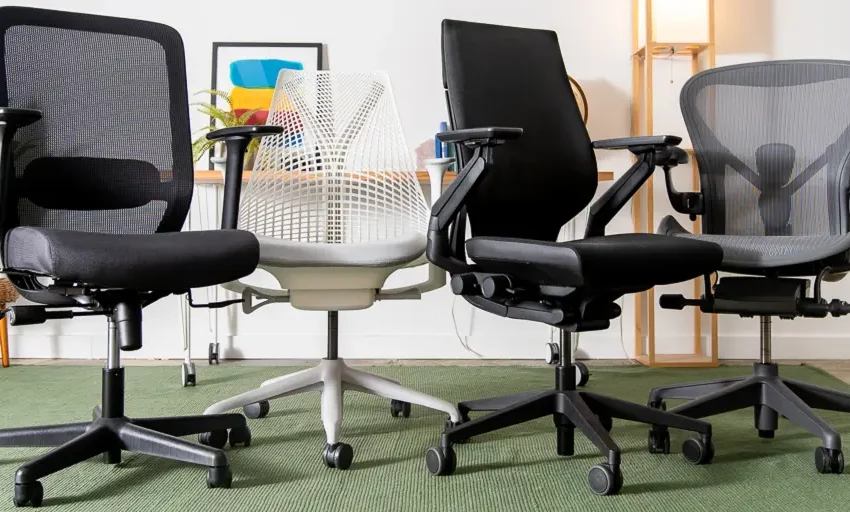
How to buy an ergonomic office chair: A complete guide
Have you changed the majority of the settings on your computer desk with keyboard tray workstation but are still uncomfortable? Do you experience lower back pain, neck pain, shoulder pain, shoulder blade pain, or even buttock pain?
Has it appeared or gotten worse? It could be time for you to spend money on an office chair that is more ergonomic.
Prior to making a purchase, it is crucial to pay attention to various factors. Most models found in supermarkets have few settings that may be changed and may not necessarily fit your physiognomy.
Here are five criteria you must check before buying something to prevent regret.
- Users of chairs
It’s crucial to take into account all potential office chair users before making a purchase.
Naturally, the models with more adjustments tend to be more expensive, but they have the benefit of being appropriate for a variety of physiognomies.
You might consider this while making a purchase if you have teens who will soon be back to CEGEP or a spouse who occasionally works from home.
If your telecommuting is temporary or part-time, you can extend the time you spend in your chair by emphasizing your own comfort.
- Seat width
- DEPTH: Leave roughly a two-finger gap at the rear of the knees to prevent squeezing the popliteal fossa;
- WIDTH: Make sure there is at least one finger of space between your thighs and the armrest supports on each side of the chair so that they do not protrude.
Additionally, you should be careful to avoid selecting a seat that is too wide because even with the various modifications, the armrests will likely be too distant from your body.
Don’t forget to consider how comfortable the seat is for you as well. Your thighs should feel well-supported and the pressure should be spread equally.
Once more, some more expensive models come with foam and fabric that are more resilient and will extend the life of your chair.
- Changing the armrests’ height
When your forearms are resting on the elbow rests and your shoulders are relaxed, your elbows should ideally create a 90° angle.
If you choose a chair type without armrests, you can still maintain an ergonomic posture by adhering to the same rules while supporting your forearms directly on your work surface.
WIDTH: Your elbows shouldn’t protrude too far from your torso due to the placement of your armrests.
The fundamental objective is to maintain neutral, relaxed shoulders. For a client with hips that are broader than their height, several chair types allow for the lateral movement or pivoting of the armrest support.
- Lumbar assistance
You must make sure you have enough lumbar support to improve your working posture and your comfort.
Your lordosis, or low back, should ideally be supported by the chair’s curve. Since backrest heights are frequently adjustable, it is possible to determine in-person whether you can have a good support for your back by adjusting the height.
Once more, in order to ensure a high level of comfort, it is imperative to sit on the chair for a few minutes with a neutral posture.
- Seat elevation
Validating the seat height in-store can be more difficult because it depends on other workstation factors (height of your desk, presence of a keyboard support, possible addition of a footrest , etc.).
Once seated at your desk, it’s crucial to maintain a neutral stance for your lower limbs. When your feet are resting on the ground, your knees should be bent at a straight angle (90°). (or on the footrest).
Your weight will not be evenly distributed across your thighs if the seat is not properly adjusted. Your lower back, the area underneath your seat bones, or even your legs may get sore as a result.
Keep in mind that a really pricey model might not be what you need, but a cheaper, more accessible model might be just right!
At the very least, make sure you assemble your chair and assess your comfort while it’s still feasible to request an exchange or refund if you are unable to try it out in-store.
Do not be reluctant to schedule a consultation with an occupational therapist who can assess your workstation or provide you with more specific advice.
Why trying something out before buying is pointless
It is frequently advised to try something before buying so that you are certain of your decision.
The truth is that visiting a store with a small range of products just to check out an ergonomic chair can actually take half a day.
But if you follow the instructions I’ve given you, you can’t fail. Consequently, be aware that a decent ergonomic office chair will compel your body to assume a beneficial working position.
As a result, you will go through an adaptation period during which the chair won’t appear as comfy to you.
The seat will be more accommodating if your body is accustomed to being in the right position.
Online, where there are many more options and affordable rates, you can choose an ergonomic chair with great ease.
Does using an ergonomic chair actually relieve back pain?
Generally, yes, if the right choice is made. However, a lot will rely on how good it is.
Everywhere, the term ergonomics is used to describe office chairs that resemble ergonomic chairs but do not have all of their advantages.
In actuality, the most affordable ergonomic chairs start at 250 euros.
A genuine ergonomic chair from a manufacturer like Herman Miller will cost you at least $350. But at least you can be certain that the product you have will work.
Finally, be aware that in order to receive appropriate therapy if you have MSDs, you must first see your doctor. Ergonomic chairs do not worsen your condition and are not a kind of treatment.
